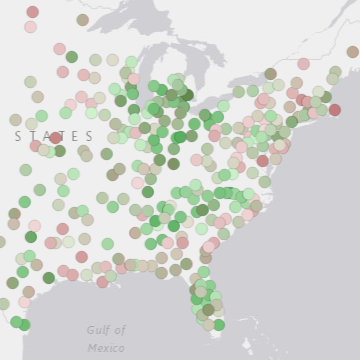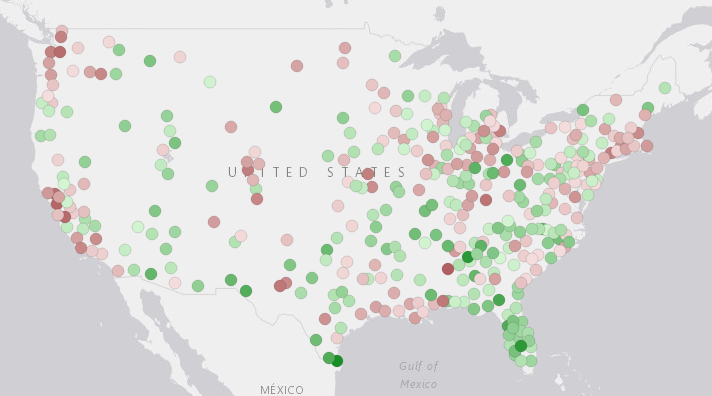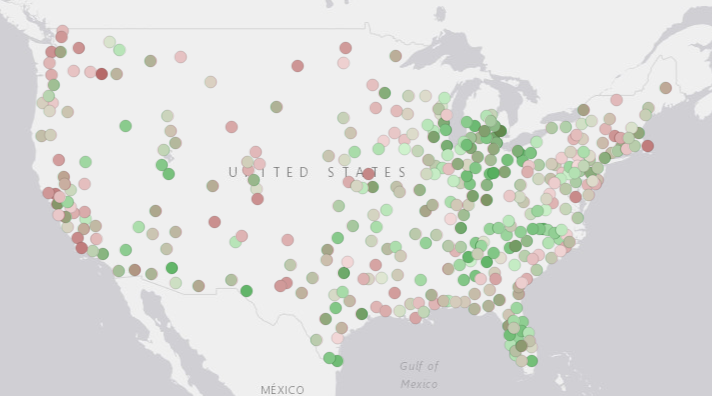Prime Expansion Locations for Automobile Manufacturers

By Alex Doherty |
Over the past five years, transportation equipment manufacturers have experienced some of the fastest employment growth within the manufacturing sector. Employment for these manufacturers in the United States grew an annual average 2.6% over the five years ending with the second quarter of 2017 compared with an annual average 1.7% for the total manufacturing sector.[1] Within transportation equipment, employment grew the fastest for manufacturers that produced motor vehicles (+4.8%), motor vehicle bodies and trailers (+4.8%), and motor vehicle parts (+4.7%).
At $72,720, transportation equipment manufacturers pay a high annual average wage. These wages are higher than the manufacturing average of $65,047 and much higher than the national average for all industries, $53,284.[2]
The fast growth rate and above-average wages of transportation equipment manufacturing make it an attractive recruitment target for economic developers. Within transportation equipment, automobile manufacturers are one of the largest industries (national employment of 119,838 for the four quarters ending in 2017Q2), offer high average annual wages ($84,778), and have grown relatively quickly over the past five years (3.3% per year).
What locations are best suited to meet auto manufacturers’ workforce needs?
To determine potential expansion locations for an automobile manufacturer, a chief consideration is a region’s ability to supply the company with the skilled workers for its operations. Using staffing patterns in Chmura’s JobsEQ software, a hypothetical automobile manufacturer with 500 workers will need at least 10 people in each of the occupations shown below.
| SOC Code | Title | New Employer Demand |
|---|---|---|
| 51-2092 | Team Assemblers | 279 |
| 51-1011 | First-Line Supervisors of Production and Operating Workers | 21 |
| 51-9199 | Production Workers, All Other | 17 |
| 17-2112 | Industrial Engineers | 13 |
| 51-9061 | Inspectors, Testers, Sorters, Samplers, and Weighers | 11 |
| 51-2099 | Assemblers and Fabricators, All Other | 10 |
| 47-2111 | Electricians | 10 |
The first consideration of the automobile manufacturer may be the payroll costs associated with these 500 new employees. Chmura’s LaborEQ platform ranks all metro areas in the country by the payroll associated with this hypothetical expansion. Shown in the map below, many areas in Florida jump out as having a relatively low-cost labor supply. Other pockets in the South and West also appear attractive to the manufacturer for their low labor costs.
MSA Payroll Rankings for a 500-Employee Expansion Automobile Manufacturing
While labor cost is an important consideration for expanding firms, there are many other factors to consider. For example, regional attributes such as labor availability, cost of living, the industry’s regional location quotient, and supply chain contribute to the firm’s decision on where to locate. Chmura’s LaborEQ platform also ranks metro areas by their ability to meet all of these demands for expanding firms.
The weight of each metric measuring labor supply, labor cost, and economic climate can be adjusted based on its importance to the expanding firm. Taking this holistic view of many contributing factors and using Chmura’s recommended default weights for each attribute, Florida’s attractiveness fades and the Midwest emerges as having many favorable locations. However, Dallas-Fort Worth, Texas ranks first for the automobile manufacturing industry, followed by Ann Arbor, Michigan, and Nashville, Tennessee.
Overall MSA Rankings for a 500-Employee Expansion in Automobile Manufacturing
[1] Based upon a four-quarter moving average. Calculated using JobsEQ employment estimates, derived from the Quarterly Census of Employment and Wages (QCEW) through 2016Q4 and preliminary estimates for the first half of 2017.
[2] All wage estimates reflect the year ending 2017Q2. Source: JobsEQ, using QCEW through 2016Q4 and preliminary estimates in 2017.
Subscribe to the Weekly Economic Update
Subscribe to the Weekly Economic Update and get news delivered straight to your inbox.











